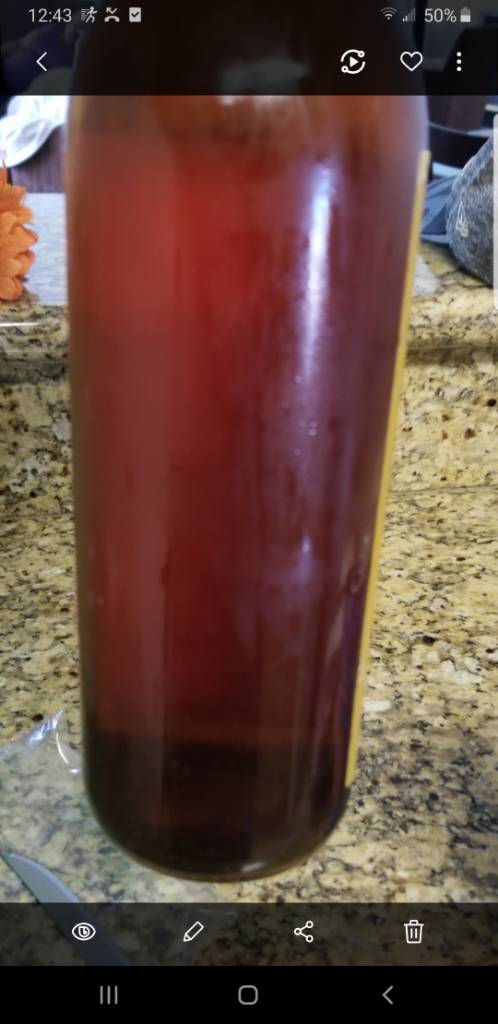applescrap
Be the ball!
My dad just gave me a bottle of mead and it has a ton of sediment on the bottom? I think its really old. Do they get sentiment? I think it's called Los carnos or something.

My dad just gave me a bottle of mead and it has a ton of sediment on the bottom? I think its really old. Do they get sentiment? I think it's called Los carnos or something.
Care to share one or two of those?
It might be easier to share the title of the book.care to share a dozen?
they can have sediment if there is some sort.of solids still in suspension when it gets bottled.My dad just gave me a bottle of mead and it has a ton of sediment on the bottom? I think its really old. Do they get sentiment?
They are very sensitive liquids....they can have sediment if there is some sort.of solids still in suspension when it gets bottled.
As for sentiment? I don't think meads care about anything....
















Great question.
I have Meads in storage 60-64 Deg F and in the dark aged in beer bottles for up to 6 years with oxygen barrier crown caps and wax seals- Higher ABV 15 - 18% using a staggered nutrient protocol (Most a SNA protocol, not really TOSNA or 2.0 or 3.0) and adding spices, fruit, hops etc in secondary with tea's or juices in primary
Here are my observations
- Show (Traditional) - Continues to get better with age. I have a few 6 Year that I wish I would have put more aside.
- JAOM - Continues to get better with age. I have one at 4 Years that is very good but at 2 years I was not happy with at all..
- Melomels (Fruit in secondary) - Peak at about 2 years - IMO Does not get appreciably worse but not really any better either after 2 years.
- Methaglins = (Spices) Start to lose some of the spice flavor at 9-12 months and a lot over time, cinnamon, vanilla etc tends to disappear, hot peppers and Hop flavors stay pretty well and even if some of the spice fade over time the base mead does seem to continue to do better with age.
- Cysers (Apple or other juices) usually spiced and oaked as well - Continue to get better with age and for some reason does require more time than other meads. IDK???
- Hydromel - (Low ABV 6 - 7%) Just started some of these this past year using a modified TOSNA 3.0 (All up front) and Groenfell Quick Mead techniques (Similar to BOMM) juice or fruit in primary and filtered with a 5 and 1 micron filter set up (because I like a nice clear glass.) good at 2 months great at 4 - 6 - Nothing has lasted much longer as I keg and carb and drink them more like cider or beer.
The interesting thing is i have a number of higher ABV meads using TOSNA 2.0 (and more recently 3.0) with much better conditions and protocols that are good to great a lot quicker. A 4 - 6 year result early on now is achieved in 12 - 24 months and 2 - 4 year results in less than a year. Yeast selection, temperature, consistent quality ingredients, nutrients, aeration, time on lees fruit or spices, CO2 release and clarifying IMO all play a part. I have no idea how much each plays a part but what I do and how I do it works for me
Thanks for your awesome post!
If I'm reading you right, using TOSNA may save a lot of time and is all upside and no downside.
Thanks for your awesome post!
If I'm reading you right, using TOSNA may save a lot of time and is all upside and no downside.
Does it still take that long if it's made using modern methods (e.g. TOSNA?).
What is it that you're doing that reduces it from 15 years down to 2 or 3?as I've gotten better I generally plan to leave big sweet Polish meads alone for 2, preferably 3 years. The number was higher when I was less experienced.
What is it that you're doing that reduces it from 15 years down to 2 or 3?
Not dead, just well aged.Hope this thread isn't dead.
Just starting mead making and I'm making a mix of a melomel and and metheglin, or maybe it's just one or the other, not sure yet. Based off of a non-alcoholic recipe I have found, tweaked, bottled and it accidentally started fermenting on its own. It's delicious to drink as-is, or spiking with vodka or gin, and trying some of the mid-ferment stuff, it catapulted me down this path. Since then, I have been learning as much as I can about the process and think I've got a pretty good start. My recipe is fruit-heavy with oranges, lemons, apple juice, black and juniper berries, also with a bit of cinnamon and nutmeg.
I guess I'm really asking for guidance here. I'm using Wyeast 4184. Would my mead benefit from doing 2 fermentations? Or could I throw everything in and ferment? Planning on Back-sweetening, and would I need to provide nutrients? I'd like to get as high as an ABV as possible but want to simplify this process as much as possible. And then how do long would any of you think I should age it? I'm aware a lot of these questions I could answer through time, effort and learning curves, but I like to start out on things I've never done before with good information from people who've done the work already and have experience to help me get a good base.
I have a gallon a mead I made maybe 6 or 7 yrs ago untouched in a glass jug sealed still the same yellowish clear so does not appear oxidized.